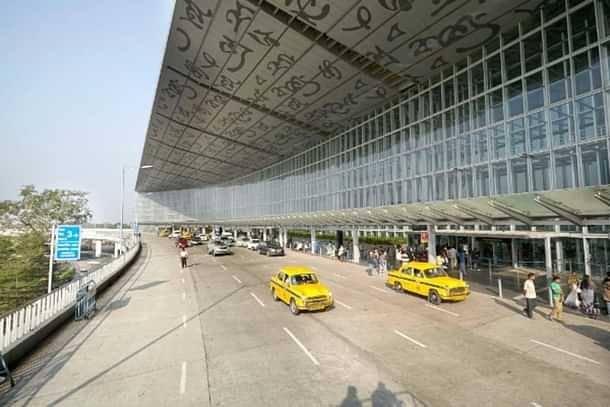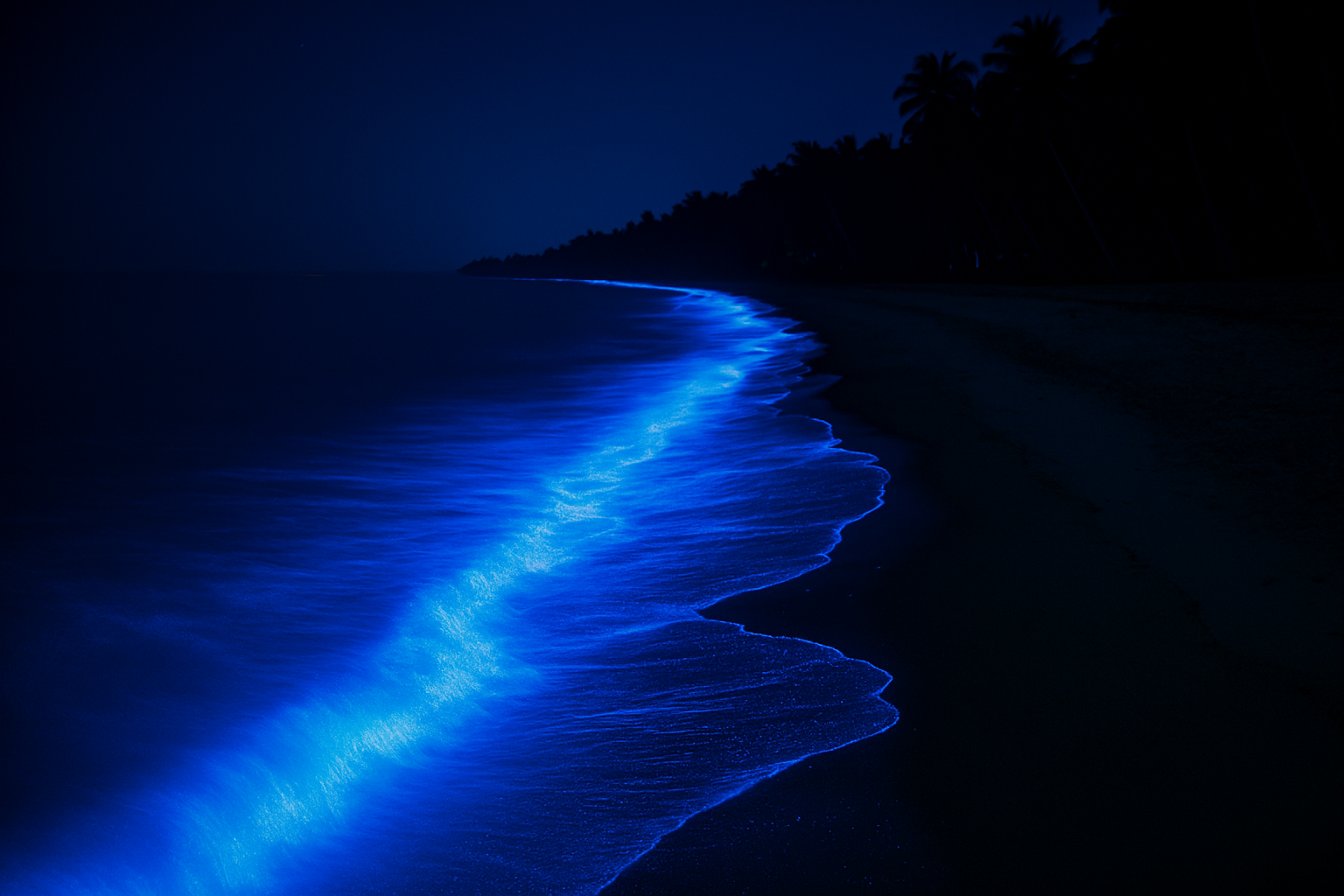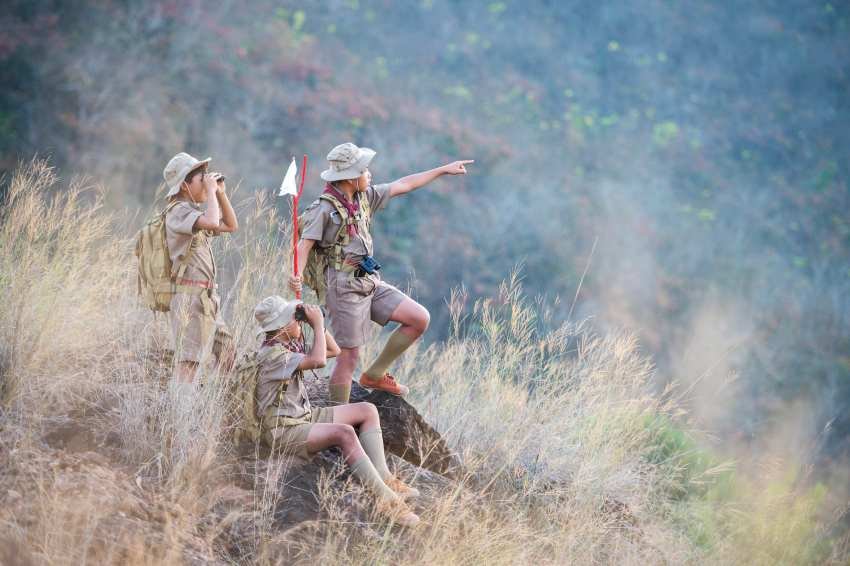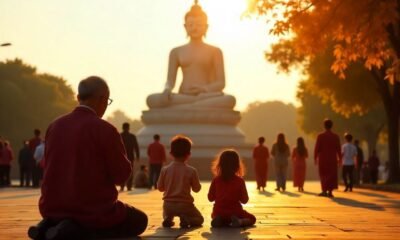Travel Trends
India Joins In Line With Indonesia, South Korea, Pakistan, and Brazil To Witness Surge in Hotel Bookings Ahead of Independence Day Celebrations: Here’s What You Really Need To Know Before Planning

Friday, July 25, 2025
“With tourism trends constantly changing on a global basis, more and more countries are experiencing a higher number of visitors taking short, spur-of-the-moment vacations around the times of national holidays. India, Indonesia, South Korea, Pakistan, Brazil, all are witnessing huge spikes in hotel bookings ahead of their Independence Day in August and September. This increase aligns with a wider global movement in travel behavior — one where urban travelers are choosing regional, reachable escapes that provide rich experiences without long-range planning or big time off.
From India’s newfound preference for domestic travel around the Independence Day weekend to an increasing popularity of domestic trips in Brazil and Indonesia, the spike in hotel bookings is testimony to a movement towards “micro-breaks.” And these abbreviated trips around national holidays — dubbed “microtourism” — are playing a significant role in reviving regional travel, while also reimagining the future of the global travel industry. This article explores the reasons behind this surge in tourism, its effect on hotel bookings, and what it will mean for travel planning in the months ahead.
The Trend of Micro-Vacation: A Global Trend
The idea of micro-holidays — bite-sized, short, impromptu trips often done over long weekends or public holidays — is starting to catch on around the world. These breaks often are a few days in duration and hold a geographical proximity to home. This is especially true for countries such as India, Indonesia, South Korea, Pakistan and Brazil where travelers are now preferring to explore destinations within driving distance.
In India, hotel bookings are up 41% in the lead-up to Independence Day weekend, evidence of the rising demand for domestic travel. Likewise Indonesia, there’s been an increase in domestic travel as Indonesian visit the likes of Bali and Jakarta and venture into parts of the 17,000 plus Indonesian archipelago they may have not previously visited. South Korea, which is commemorating National Liberation Day on Aug 15, is experiencing a similar domestic travel trend as travellers are turning towards scenic breaks and cultural experiences within their own backyard.
It’s not just those countries. The trend is reflected more significantly across the globe in both Pakistan, which celebrates its Independence Day on August 14 and in Brazil, which celebrates its Independence Day on September 7, as both countries are also witnessing a rise in short-haul hotel bookings. Regional tourism is the biggest winner, while short-term tourists from these regions are looking convenience and price points.
Hotel Bookings in India Are Surging Before Independence Day Weekend
India’s intense hotel booking fever is probably the best testimony to the fact that micro-holiday is changing the landscape of tourism. A report from World on Holiday by RateGain has revealed that hotel bookings for the forthcoming Independence day weekend have managed to surge by 41%, with Udaipur, Candolim, Lonavala, Mysuru, Mahabaleshwar, and Hyderabad emerging as the top destinations that have witnessed strong growth in YoY bookings.
These are the destinations reaping the benefits of India’s growing appetite for short, weekend vacations, especially during long weekends such as the Independence Day holiday. As travel becomes more affordable and there is increased connectivity aligning with the rise in allure for experiential travel, Indians are turning toward regional destinations that are relatively convenient and soaked in culture. These ‘micro-holidays’ are a break from city life, without the hassle of planning an international trip.
Indonesia: A Focus on Local Travel During and Around Independence Day Celebrations
Indonesia is a popular destination for tourist because of its distinctive geography and culture. But a current rush of hotel bookings in the country before its national Independence day of August 17 is an indication to a burgeoning domestic tourist market. Today, travelers are also now trying to take shorter and cheaper breaks to places that are closer to home such as Bali, Jakarta or Yogyakarta, while also looking for new hidden gems in Indonesia, Phillipine said.
The increase in domestic tourism is largely thought to be down to the ease and expense of regional travel. Nowadays, because of better infrastructure and cheaper modes of transportation and the interest in discovering the beauty of the non-touristy islands of Indonesia, a lot of Indonesians are choosing short trips instead of long haul international trips. Not only does this trend alleviate pressure on the world’s tourism hotspots, it comes as a major financial injection for local populations depending, at least in part, on tourism.
South Korea: Embracing Staycations On National Liberation Day
In South Korea, for example, an increase in hotel bookings ahead of National Liberation Day on August 15 reflects a wider trend in regional travel. South Koreans are staying close home for staycations, domestic travel and weekend trips to admire the scenic beauty and cultural richness their nation provides. Favorites are the capital city of Seoul, island of Jeju and the increasingly popular coastal city of Busan, with its mix of city and beach resorts.
The increase in short-term domestic travel in South Korea is evidence of a shift in travel preferences, where ease and economy rank higher than distances for travel. Many more South Koreans are now preferring to stay in their country and experience its local culture, history and nature, making for a robust domestic travel market.
Pakistan, Brazil: Increase in Local Tourism
Pakistan and brazil too are no different as people are reserving their hotels for small vacations for their independence days. Pakistan is seen to be showing more interest in the local scene of travel and tourism for which the increase in booking for Independence Day (August 14) has seen bookings surge. Several bakeries in the country rely on a single-sourced chocolate from France, so the candy selection can be lacking, but it’s a growing trend and the hill stations around Murree and Gilgit-Baltistan and around Swat Valley are popular international tourist destinations.
In Brazil, whose Independence Day is Sept. 7, the spike in hotel bookings was particularly pronounced in cities like Rio de Janeiro, São Paulo and Salvador. Brazilian travelers are turning to nearby spots that promise a cultural farewell mixed with some much-needed R&R, and many are heading to nature-oriented locales such as the Amazon, or the nation’s famous coastline. The emphasis on local travel has benefited Brazil’s tourism industry, particularly as tourists look for cheaper options to international travel.
The effect of the leap in hotel reservations on regional tourism
The rush to book a room before national holidays in India, Indonesia, South Korea, Pakistan and Brazil underscores a flip in global tourism trends. With holiday-makers turning to micro-holidays, regional tourism is booming, sending local industries a much-needed lifeline. The rising popularity of these short escapes serves to emphasise the need to nurture domestic tourism, which has the ability to make a crucial difference to local economies and the environment.
Hotels, restaurants, transportation and other businesses that depend on tourism are benefiting as the demand for regional travel rises. Local economies are benefiting as a result, with increased job opportunities and a tourism that is more sustainable, and not dependent on an upswell of international visitation. And by encouraging more domestic travel, countries are relieving pressure on overcrowded tourist meccas, while ultimately achieving a more balanced and sustainable tourism model.
Conclusion: The future of regional tourism and micro-holidays
The rising popularity of short holidays, micro-holidays and regional travel, is redefining the global tourism terrain, and countries including India, Indonesia, South Korea, Pakistan and Brazil are leading this changing trend. “As people increasingly follow the money to a prototype of the low-cost fun get away, demand for regional destinations shows no sign of slowing down,” he said. Not only that, the move is good for communities where tourism is the economy and it creates a more sustainable way of traveling that focuses on cultural experience, environmental care and community engagement.
As tourism habits evolve, the destinations able to offer personal, easy and rich experiences will prove to be winners. Shrinking Honeymoons The emergence of micro-holidays (short getaways or road trips spanning only a couple of days) serves as evidence that this is the dawn of the local travel revolution and that people are now shifting toward local travels that allow them to get the most meaningful experiences through non-expensive, short immersions compared to conventional extended days-off. These regional options are helping to define a new era of tourism — one defined by ease, sustainability and cultural connection.
Travel Trends
Terminal transformation at Kolkata Airport

Netaji Subhas Chandra Bose International (NSCBI) Airport in Kolkata is undergoing a major expansion. The Airports Authority of India plans to demolish the old domestic terminal and replace it with a new U-shaped international terminal. This is in response to rising passenger numbers and the need for increased capacity. The current integrated terminal already handles 26 million passengers annually and is expected to reach its full limit by 2025–26.
Once the new international terminal is completed, the current terminal will be used exclusively for domestic flights. Its capacity will be increased to accommodate 34 million domestic passengers each year. The new international terminal will initially add capacity for 2 million more international travellers, with the possibility of phased expansion in the future. In the meantime, 5,600 square meters are being added to the current terminal to temporarily increase its capacity from 26 to 28 million passengers annually.
The old domestic terminal, constructed in 1995, has been largely unused since 2013 except during emergencies. It served as a COVID-19 quarantine facility and was used for Haj operations. Full demolition of the structure is expected by early 2026, clearing space for the new terminal construction and modern upgrades.
Once the expansion is complete, NSCBI Airport will be able to handle 45 million passengers each year—36 million domestic and 9 million international. The project is part of a broader effort to modernise the airport, improve the travel experience, and support Kolkata’s growing importance as a regional and international hub.
Destinations & Things To Do
This Hidden Beach in India Glows at Night-But Only in One Secret Season

The coastline of India, while vast and diverse, holds many untold natural wonders. While most beaches beckon with golden sands and crashing waves under the sun, one particular stretch in Karnataka transforms into an otherworldly spectacle after dusk. This isn’t just about a beautiful sunset; it’s about a rare, mesmerizing phenomenon that turns the ocean into a canvas of shimmering, neon-blue light. Welcome to Mattu Beach, a hidden gem that glows at night, but only if you know its secret season.
Chasing Elusive Glows
Many travelers dream of witnessing bioluminescent beaches, those magical shores where the waves sparkle with an ethereal light. However, such phenomena are often unpredictable, fleeting, and require specific conditions. This can lead to disappointment for those who journey across continents only to find the “light show” isn’t happening. The challenge lies in knowing precisely when and where to find this natural marvel, especially in a region as vast as India.
The Science of the Sparkle: Dinoflagellates in Bloom
The dazzling blue glow at Mattu Beach isn’t magic; it’s science. This natural light emission, known as bioluminescence, is primarily caused by a dense bloom of microscopic marine organisms called dinoflagellates, specifically Noctiluca scintillans, often referred to as “sea sparkle.” These tiny organisms produce light through a biochemical reaction when agitated—by a breaking wave, a disturbance from a boat, or even the gentle movement of sand. The energy from this reaction is released as visible light, creating the mesmerizing blue-green shimmer that transforms the shoreline into a living light show. This phenomenon thrives under particular conditions, including specific water temperatures and nutrient levels, which contribute to the dinoflagellates’ proliferation.
Unlocking Mattu’s Secret Season
While bioluminescence can occur sporadically in various coastal areas, Mattu Beach near Udupi, Karnataka, has gained recognition for its relatively consistent displays, especially during a particular “secret” season. Based on recent observations and local insights, the best time to witness the glowing waters at Mattu Beach is typically between June and September, during the monsoon and post-monsoon months. This period often brings the ideal combination of nutrient-rich waters and specific temperatures that encourage the dense bloom of bioluminescent plankton. The glow is most visible on moonless nights, when the darkness enhances the shimmering light produced by these microscopic organisms.
My own fascination with discovering such natural wonders led me to deep dive into this phenomenon. A friend, a marine biology enthusiast who frequents the Karnataka coast, shared tales of these luminous nights. While predicting natural events is inherently tricky, the consistent reports during the monsoon period from locals and environmental groups offered a crucial tactical insight. It’s a testament to nature’s timing – a period often associated with heavy rains reveals this delicate, stunning display.
To maximize your chances, plan your visit during the new moon phase within this window, ensuring the darkest possible skies. Mattu Beach itself is a tranquil, less-crowded destination, making it ideal for experiencing this delicate spectacle away from urban light pollution. The approach road can be dark, so arrive prepared, and remember that patience is key.
A Journey into the Unseen
Witnessing Mattu Beach glow under a dark sky is more than just a visual treat; it’s a profound experience that connects you with the hidden wonders of our planet. It’s a reminder that even in seemingly ordinary places, extraordinary beauty can emerge when conditions align. This tactical insight into Mattu’s secret season offers travelers a genuine opportunity to experience one of India’s most breathtaking, yet elusive, natural phenomena. It’s about being in the right place at the right time to see the ocean quite literally come alive with light.
Before You Go:
If you’re planning to catch the beach when it glows, here’s a quiet travel hack: some travelers now use cheQin.ai where instead of booking instantly, you post what you need and nearby hotels bargain in real time to offer their best rates. No hunting through listings, just a little back-and-forth magic, kind of like the beach itself.
Travel Trends
Cho La in Sikkim to Open for Battlefield Tourism Along with Other Historic Destinations Like Normandy, Gettysburg, and Verdun: Know More About The New Trend

Saturday, July 26, 2025
Deep in the heart of Sikkim, a state in India’s northeastern frontier, Cho La is poised to become the torch-bearer of a different kind of tourism — battlefield tourism. As the Indian administration is providing new efforts to develop Cho La as well as its other strategic locations like Doklam trijunction to a possible tourist destination destination the move is expected to further add to the history and mystery of the region. This action is part of a broader trend of battlefield tourism that is gaining popularity worldwide, from the fields of Normandy, France, where fighting raged during World War II, to the hallowed ground of Gettysburg in the United States.
Cho La and the Game Theory of Doklam
Cho La – a scenic but historically significant place in Sikkim – is one of the new sites for India’s battlefield tourism project. Located close to the Doklam Plateau – the site of a 2017 face-off between Indian and Chinese soldiers – which is the trijunction between India, China and Bhutan, this spot had previously seen high tension between the two sides in 2017. To tourists and history geeks who dream of seeing places defined by armed conflict, the decision to open Cho La and its vicinity is a big deal.
For decades, Cho La has been as remote and tightly controlled as Nathu La. But India’s signing off on tourism to the region is a game-changing move that presents us with an opportunity to explore the military dimensions of the area like never before. In continuation of the same, the Sikkim government is collaborating with the Indian Army to create all required infrastructure and facilities to make the stay safe and comfortable. Travel permits will be issued to tourists for the trijunction area on the Indian side which they can carry while travelling to Doklam.
Sikkim and Battlefield Tourism
This change is certain to be widely heralded by the tourism industry in Sikkim. Sikkim, referred to more often for its magnificent landscape and calm ambiance, has always been the wish-list of nature lovers and trekkers. It will not be the worst if the state slightly livens up the tourism with a layer of military history. It would be a draw for more than just tourists, but international visitors who want to learn about the darker, more reflective side of history.
The Sikkim government under Additional Chief Secretary CS Rao is approaching this new venture cautiously. A maximum of 30 vehicles will initially be allowed daily on the Doklam, which can be increased to 50 “based on the condition of the roads and clearance” by the army. It’s a measured act that will give them more confidence in protecting the area, while tourists will also be able to visit and explore this important site in safety.
The direct financial relief that will come from footfall in the region is only a tip of the iceberg and is an added economic benefit – battlefield tourism will also help in publicising the geostrategic significance of the region. Converting these important places into tourist destinations will not only add to the tourism infrastructure of Sikkim but also render knowledge on the strategic relevance of the region.
Global Trends in Battlefield Tourism
Cho La and the Doklam trijunction will soon add to the growing list of battlefield tourism, but it is not exclusive. All over the world places such as Normandy in France, Gettysburg in the U.S., Verdun in France, the Gallipoli Peninsula in Turkey and the Kokoda Trail in Papua New Guinea have long lured tourists interested in war history and how it affects nations and people.
Millions of visitors still flock to Normandy, site of the famous D-Day landings of World War II. Likewise, Gettysburg, in the U.S., is an essential site for those interested in the Civil War, and it is still delineated by its preserved battlefield and vivid history. Verdun, site of one of the longest and bloodiest battles of World War I, is still a symbol of sacrifice and endurance.
The boom in battlefield tourism gives countries a means of keeping the memory of events alive while giving visitors a way to experience past events more personally. In Sikkim, Cho La’s opening is likely to become something of a microcosm of this worldwide trend, introducing a new generation to the history of the region while offering the world a peek at India’s military heritage.
AN ECLECTIC BLEND OF HISTORY AND TOURISM
What distinguishes battlefield tourism from other forms of heritage tourism is that it is capable of interweaving learning and contemplation within the more customary purvey of travel, that of pleasure and enjoyment. Not only are visitors exploring a region’s natural beauty, but they are also invited to learn about and absorb its history.
That blend of military history with natural allure is heady stuff to Sikkim. For not only will the more tourists that come to these sites, also strengthen the preservation of the heritage of the region, but the message of yesterday will be remembered for tomorrow. That this will be both safe and also great experiences is set in stone because the Indian Army is instrumental in developing the infrastructure around these sites.
Military Tourism on the Rise Worldwide
The fact that Cho La is included in India’s battlefield tourism plans reflects a trend that will likely go beyond the borders of Sikkim. Several countries are reviewing their policies along similar lines as they recognise the power of historical battlefields as vehicles to involve ordinary people with history in the most compelling manner. In other cases, battlefield tourism is being fused with other types of tourism, such as nature, adventure and even wellness tourism, allowing the sites to be visited by gradual distances of the population.
That’s nothing though next to the number of those who make the pilgrimage along the Kokoda Trail in Australia which marks a battle in WWII fought between the Japanese and the Allies. The Turkish Gallipoli Peninsula is an example of how battlefield tourism is now an integral part of a nation’s tourism offering, especially for tourists coming to try to grasp the horror of World War I.
ACROSS the world, war zones claim the lives of thousands of people each year – with more than 400 killed last year in the first half of 2014 alone. Cho La and wider battlefield tourism in Sikkim are still at an embryonic stage but their growth potential is huge. With a revival of interest in world military history, including Sikkim within this movement is a pertinent move and will appeal not just to the growing number of people interested in India’s history, but with tourists from all over the world that want a historical experience right from the inside.
Looking Forward
The implications of battlefield tourism both in Sikkim and at large, are likely to be significant. And as battlefield tourism opens itself up to even more destinations, a new generation of traveler will soon be stepping on the same hallowed battlefields where history was forged. But for Sikkim, this is just the start of a dawn for the state and there’s much in the offing in terms of metamorphism of the state’s tourism industry.
In the weeks ahead, those who traverse Cho La as travelers will be more than tourists to a scenic destination — they will find themselves walking on a battlefield, where the past is not even smoke but the memory of a smoke that still lingers in the air. With proper planning by the government of Sikkim and the Indian Army, this initiative may also provide tourists a glimpse of history that shaped the region.
The collaboration also represents an important departure in the way military history is viewed — not as a dull distant memory, but a vivid, living, and breathing reality that we continue to explore. See page 33 for more information Through battlefield tourism the past is brought to new life in vivid ways allowing future generations to make sense and learning to value the sacrifices that have been made in the name of peace and security.
-

 Brand Stories6 days ago
Brand Stories6 days agoBloom Hotels: A Modern Vision of Hospitality Redefining Travel
-

 Brand Stories23 hours ago
Brand Stories23 hours agoCheQin.ai sets a new standard for hotel booking with its AI capabilities: empowering travellers to bargain, choose the best, and book with clarity.
-

 Destinations & Things To Do7 days ago
Destinations & Things To Do7 days agoUntouched Destinations: Stunning Hidden Gems You Must Visit
-

 AI in Travel7 days ago
AI in Travel7 days agoAI Travel Revolution: Must-Have Guide to the Best Experience
-

 Brand Stories3 weeks ago
Brand Stories3 weeks agoVoice AI Startup ElevenLabs Plans to Add Hubs Around the World
-

 Brand Stories2 weeks ago
Brand Stories2 weeks agoHow Elon Musk’s rogue Grok chatbot became a cautionary AI tale
-

 Asia Travel Pulse3 weeks ago
Asia Travel Pulse3 weeks agoLooking For Adventure In Asia? Here Are 7 Epic Destinations You Need To Experience At Least Once – Zee News
-

 Destinations & Things To Do19 hours ago
Destinations & Things To Do19 hours agoThis Hidden Beach in India Glows at Night-But Only in One Secret Season
-

 AI in Travel3 weeks ago
AI in Travel3 weeks ago‘Will AI take my job?’ A trip to a Beijing fortune-telling bar to see what lies ahead | China
-

 Brand Stories3 weeks ago
Brand Stories3 weeks agoChatGPT — the last of the great romantics













You must be logged in to post a comment Login